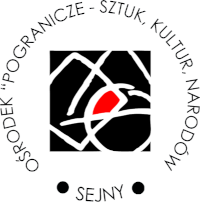Zofia is a writer, and her son Piotr is a beekeeper. For several years, along with partners from Belarus and Lithuania, he has been reviving an almost forgotten ancient method of harvesting honey from bees living in tree hollows. His story was extensive, ranging from a beehive dating back to the 11th century, recently found in the old riverbed of the San River, through linden flowers to modern laboratories where scientists modify the genotype of yeast used in mead production. “Honey is one of the most beautiful products that man can obtain,” said Arczil Kikodze.
The next part of our journey led us up the river to Maćkowa Ruda. Anna Strumiłło welcomed us to the estate built by her parents. We were also hosted by two sisters - mares, who have lived there for over 20 years, descended from a line of horses that have been with the family from the very beginning. During the communist era, when Andrzej and Danuta Strumiłło bought the house in the countryside, the law required them to use the land for agricultural purposes. So, they bred horses.Standing among the stones that are still brought to this place by family members, we listened to stories about the house and the creative work that has been going on within its walls continuously since the day it was built. We toured the gallery, which a few days ago received Andrzej Strumiłło’s paintings from the “Mandala” series and serves as a place to present works created by family members.
The visit to the third house could only take place through the medium of film. Ana Dziapshipa, the director, also cannot freely travel to the place where she spent her childhood. Her grandfather built the house during his time as a star player for Dinamo Tbilisi. He built it among the mountains of Abkhazia; it is large and spacious—able to accommodate in the summer an entire family whose members speak all Caucasian languages. After the 1993 war, a new border, practically impossible to cross, separated the house from its inhabitants. Spiders moved in. These insects inspired the creation of the film.
The next day, Ana Dziapshipa talked about the making of “Self-portrait along the borderline,” the difficult choices facing a documentary filmmaker, the dilemmas of whether it makes sense to create new images in an era saturated with them, and the role of the collective in creative work. She showed us other Abkhazian artists who tell stories about homes they cannot return to through their art. The borderline runs through poetry, sculpture, and literature. “Art is not therapy because, unlike therapy, it can be full of joy, and joy is the domain of bordelanders” the director claims.
















